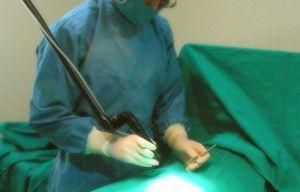 If you want to bring a medical malpractice lawsuit against a doctor, hospital or other healthcare professional, there are certain things you will need to prove.
If you want to bring a medical malpractice lawsuit against a doctor, hospital or other healthcare professional, there are certain things you will need to prove.
On this page we will look at each of the necessary elements that must be proven under Maryland law in order to bring a valid claim for medical malpractice.
The Basic Elements of Medical Malpractice Claims in Maryland
A cause of action for medical malpractice is a special variation of the common tort of negligence. Medical malpractice is basically just negligence by a medical professional and the legal elements of a malpractice claim are variations of the elements require for negligence.
To establish a valid medical malpractice claim under Maryland law, a plaintiff must be able to prove three things:
- DUTY: defendant owed a professional duty because a “patient-provider relationship” existed.
- BREACH: defendant breached this duty by providing treatment that fell below the accepted standard of care.
- INJURY & CAUSATION: defendant’s breach of the standard of care was the direct cause of actual physical injury to the plaintiff.
Each of these 3 elements of malpractice claims presents its own unique challenges and evidentiary requirements which are discussed separately below.
(1) Duty
To establish the first element of medical malpractice claim under Maryland law, the plaintiff must be able to show that the defendant owed them a professional duty. A defendant owes a professional duty whenever a doctor-patient or provider-patient relationship exists with the plaintiff. If the plaintiff was not a patient, no professional duty is owed by the defendant and they cannot be liable for malpractice.
The duty element is rarely contested in medical malpractice cases because the existence of provider-patient relationship is usually obvious. The one very limited exception is in situations where a doctor renders treatment gratuitously in an emergency situation (e.g., a good samaritan doctor). Our lawyers have never handled a case where duty was seriously contested by the doctor’s attorneys in a malpractice case.
(2) Breach
To establish the second element of a medical malpractice claim, the plaintiff must go through a 2-part process. First, the plaintiff must define the applicable standard of medical care and present evidence to support it. Second, the plaintiff must prove that the defendant’s actions or treatment deviated from that accepted medical care standard.
Under Maryland law, the “standard of medical care” is an objective concept. It requires the skill, knowledge and methods normally used and generally accepted in the medical community. To establish a breach, the plaintiff must show that the defendant’s treatment clearly deviated from or fell short of these accepted medical standards of care.
Defining the applicable standard of care and proving that it was breached is usually the central battleground in malpractice cases. These crucial elements must be proven with expert testimony. To even get the case to a jury, you need a doctor to testify on your behalf that the defendant health care provider breached the appropriate standard of care.
(3) Causation and Injury
The third and final element of a malpractice claim you must prove is really two elements combined into one. The plaintiff must show that they were physically injured and that the defendant’s breach of the standard of care was the direct cause of that injury. Establishing causation does not require absolute certainty. Instead, plaintiffs can prove causation if the evidence reasonably shows that the defendant’s actions were a “substantial cause” of the injuries.
If you are a doctor, you don’t want to be fighting a malpractice case with your malpractice lawyer standing up there saying that you may have been negligent but your negligence is not what caused the harm. Still, many malpractice are won because the jury cannot connect the dots between the medical mistake that was made and the injuries that ensued.
Standard of Proof in Malpractice Cases
The standard of proof applied in malpractice cases is the same as in other tort cases. To prove a malpractice case in Maryland, the victim must prove that it is more probable than not that the treatment caused injury.
In other words, the plaintiff must prove that there was more than a 50% likelihood that the injury was caused by medical malpractice. For example, in a case involving medical negligence for a misdiagnosis, if there was less than a 50% chance that an earlier misdiagnosis caused the injury, this is not medical malpractice in Maryland. This “loss of chance” doctrine also applies to medical malpractice cases in Maryland in which the claimed malpractice lessened the effectiveness of treatment or increased the risk of an unfavorable outcome to the malpractice victim.
Related Malpractice Information
- Medical Malpractice in Maryland: general overview
- FAQ’s for medical malpractice victims
 Medical Malpractice
Medical Malpractice





